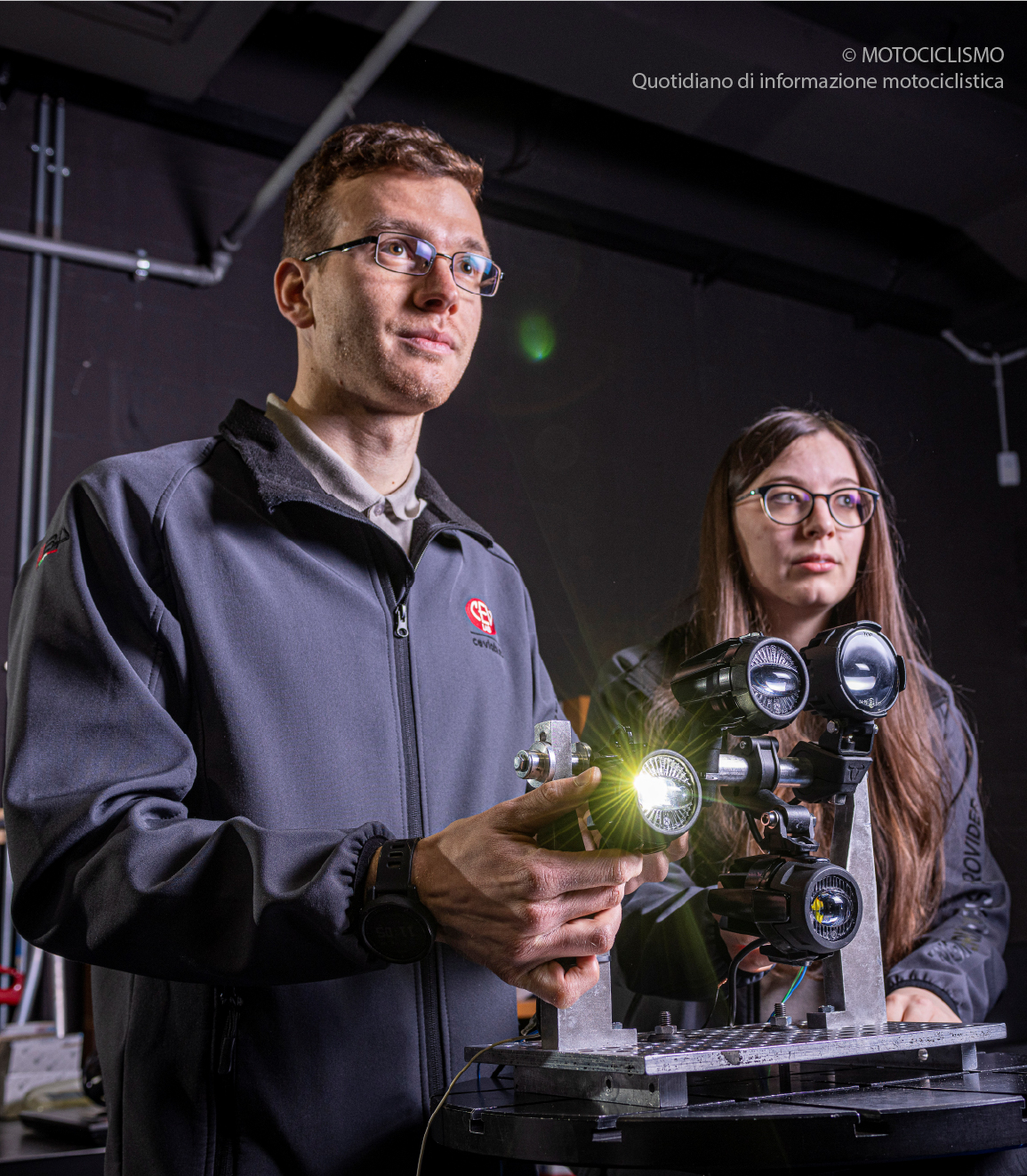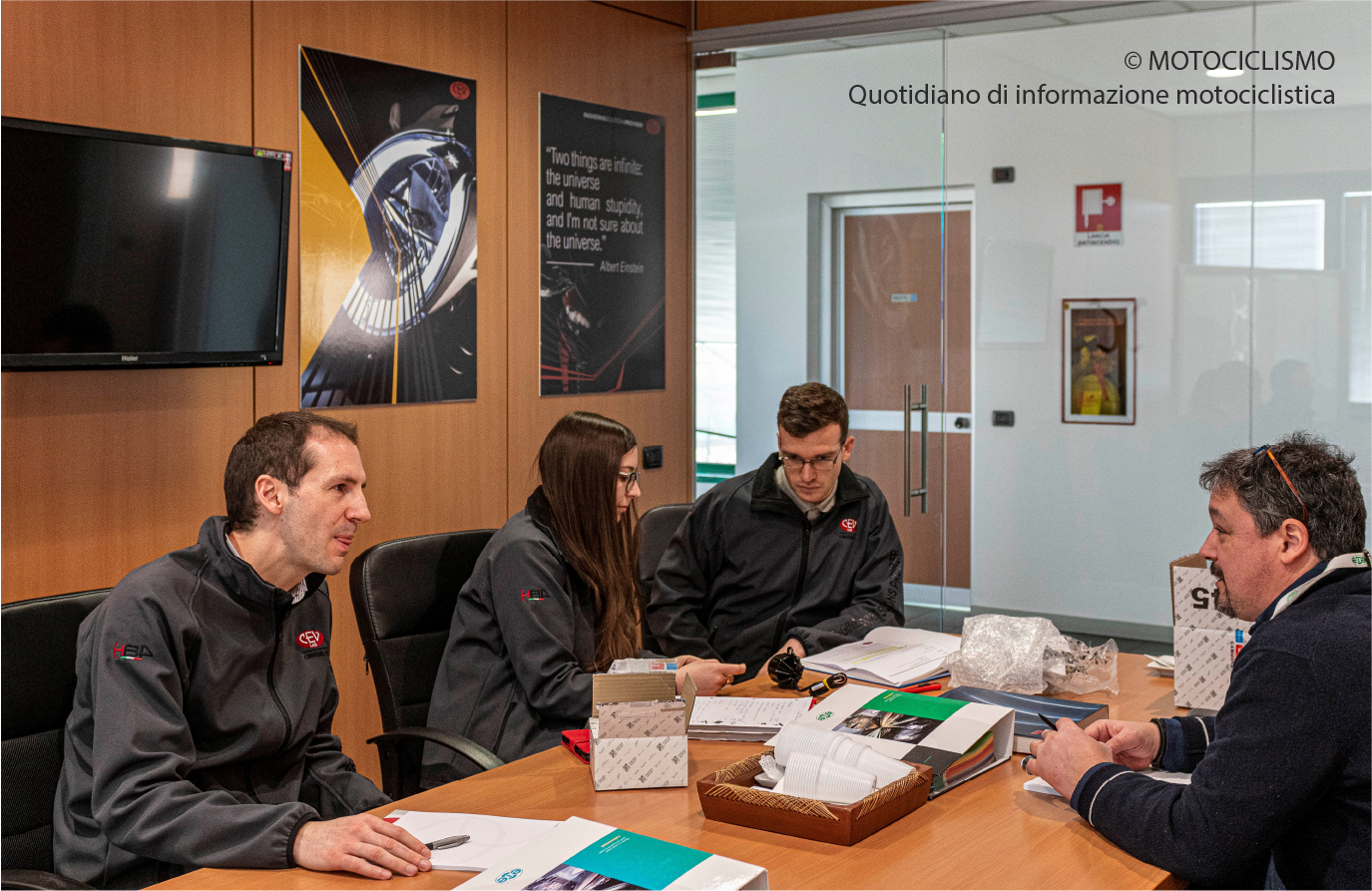A project in collaboration with MOTOCICLISMO
“AND LIGHT WAS” WITH CEVLAB PHOTOMETRIC LABORATORY
In the last ten years more and more motorcycles, even with small displacements, focus on the “adventure” aspect, with massive protective bars, ideal for hooking up the additional lights. Using a Moto Guzzi V85 TT with original crash bars, we put four pairs of additional fog lights to the test: three aftermarket ones plus those offered in the Eagle manufacturer’s catalogue. The original accessories are mounted on supports attached to the V85 headlight frame, while the other three have adjustable fixing systems for the crash bars. All with LED technology and aluminum body, the sets of spotlights under test cost between 151 and 324 euros, a rather wide range.
GO TO THE “ILLUMINANCE” TEST
The “illuminance” test is carried out in the photometric laboratory CevLab in Lainate (MI). Among the requirements examined, the presence of a clear demarcation line (also called cut-off), i.e. a transition between the illuminated and dark area that is sufficiently clear so as not to dazzle the others, and an orientation of the illuminated area below the horizon . Technician Luca Venier and optical engineer Selene Carrara adjust the projectors before the test. The uniformity of the light is also evaluated and the virtual footprint is obtained.
WIDE BEAM
Fog lights must have a well-developed beam in width, to illuminate the roadside and, almost always, perform better if hooked as low as possible (the minimum height allowed is 250 mm, while in height the limit is the low beam ). In this test, however, we will see that there are more effective projectors mounted low (those with a wider beam) and others that perform better with a higher mounting (narrower beam).
With “equal fog”, those who usually travel on winding roads could favor the “fendi” with a wide footprint in the very first meters, for example to see a hairpin bend well, while those traveling on faster roads should turn to those that “widen” further on.
Source: Motociclismo



